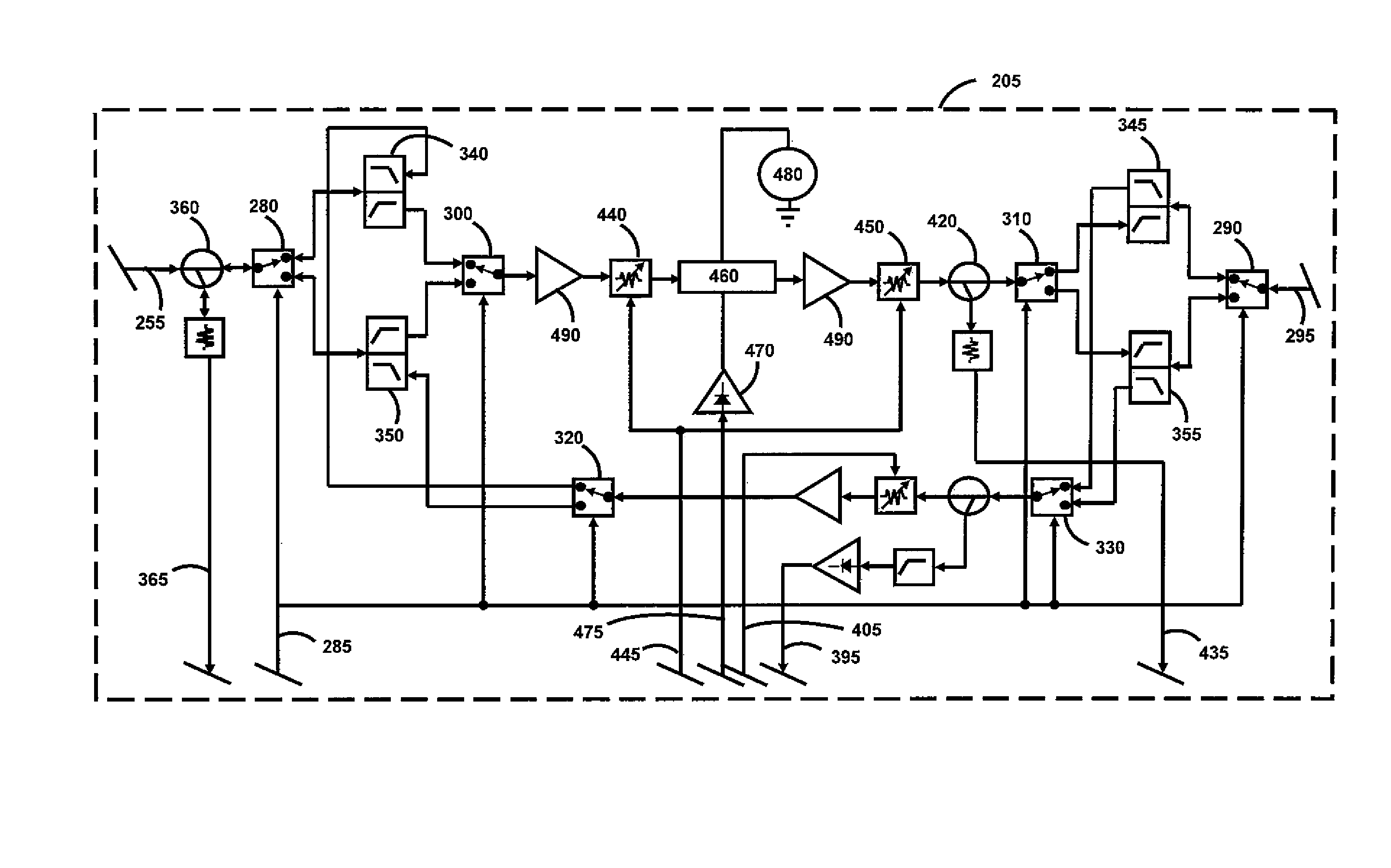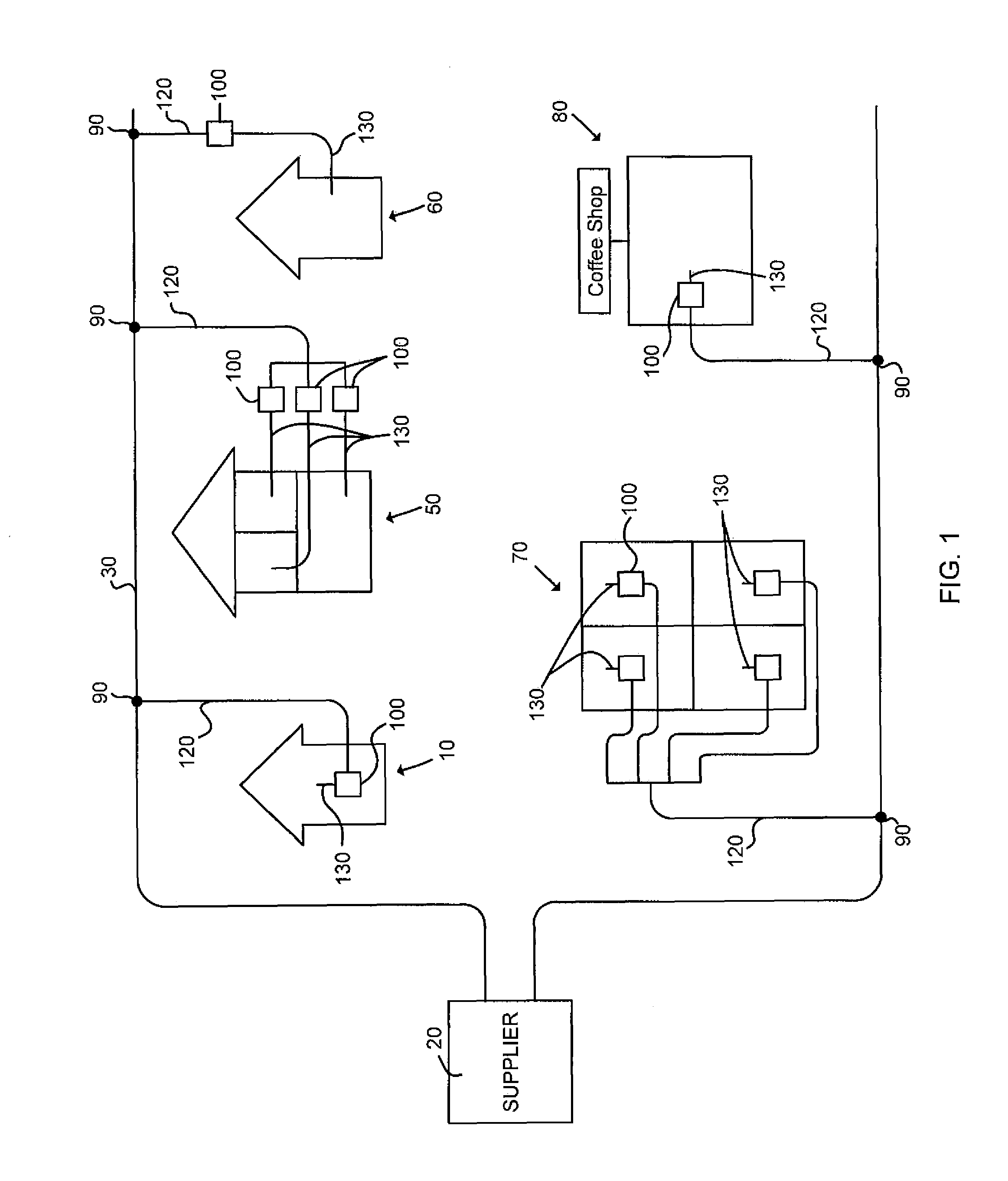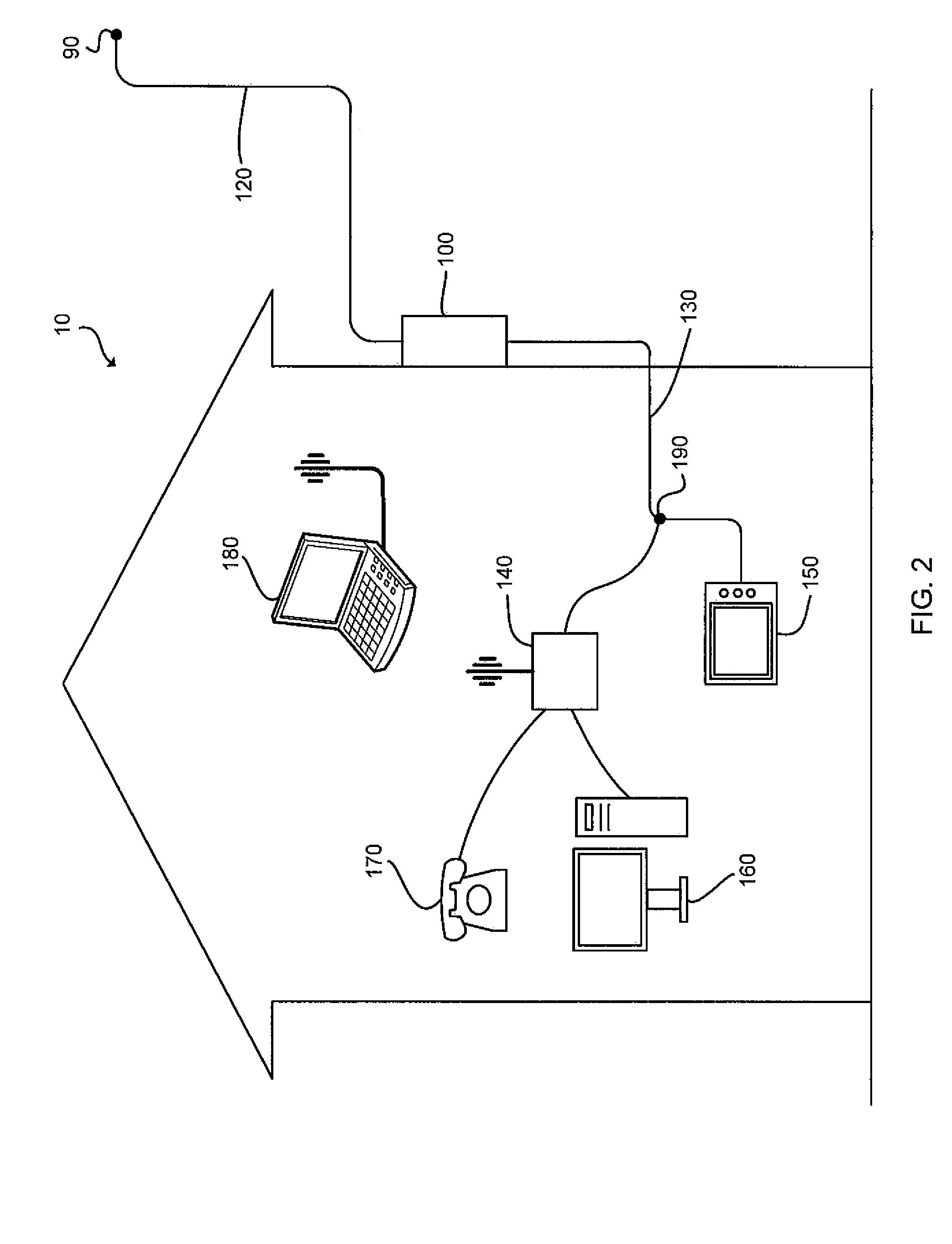Downstream output level and/or output level tilt compensation device between CATV distribution system and CATV user
a technology of tilt compensation and catv, which is applied in the direction of amplitude demodulation, line-fault/interference reduction, pulse technique, etc., can solve the problems of increasing upstream bandwidth usage, increasing the demand on upstream bandwidth by voip telephone services, and increasing the signal quality of downstream bandwidth , the effect of reducing the effect of parasitic losses
- Summary
- Abstract
- Description
- Claims
- Application Information
AI Technical Summary
Benefits of technology
Problems solved by technology
Method used
Image
Examples
Embodiment Construction
[0039]As shown in FIG. 1, a cable television (“CATV”) system typically includes a supplier 20 that transmits downstream signals, such as radio frequency (“RF”) signals, digital signals, optical signals, etc., to a user through a main signal distribution system 30 and receives upstream signals from a user through the same main signal distribution system 30. A tap 90 is located at the main signal distribution system 30 to allow for the passage of the downstream\upstream signals from\to the main signal distribution system 30. A drop transmission line 120 is then used to connect the tap 90 to a house 10, 60, an apartment building 50, 70, a coffee shop 80, and so on. A premise device 100 of the present invention is connected in series or in parallel between the drop transmission line 120 and a user's premise distribution system 130.
[0040]Referring still to FIG. 1, is should be understood that the premise device 100 can be placed at any location between the tap 90 and the user's premise d...
PUM
 Login to view more
Login to view more Abstract
Description
Claims
Application Information
 Login to view more
Login to view more - R&D Engineer
- R&D Manager
- IP Professional
- Industry Leading Data Capabilities
- Powerful AI technology
- Patent DNA Extraction
Browse by: Latest US Patents, China's latest patents, Technical Efficacy Thesaurus, Application Domain, Technology Topic.
© 2024 PatSnap. All rights reserved.Legal|Privacy policy|Modern Slavery Act Transparency Statement|Sitemap



